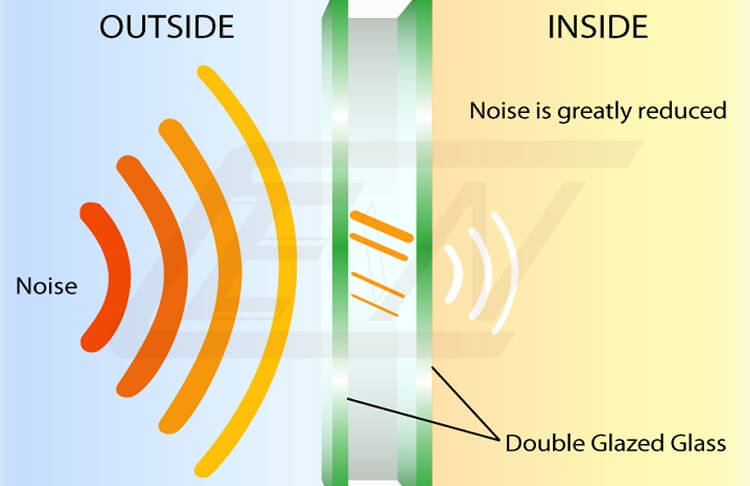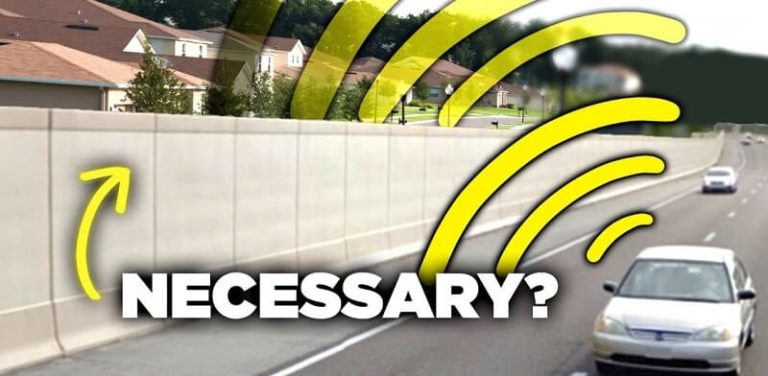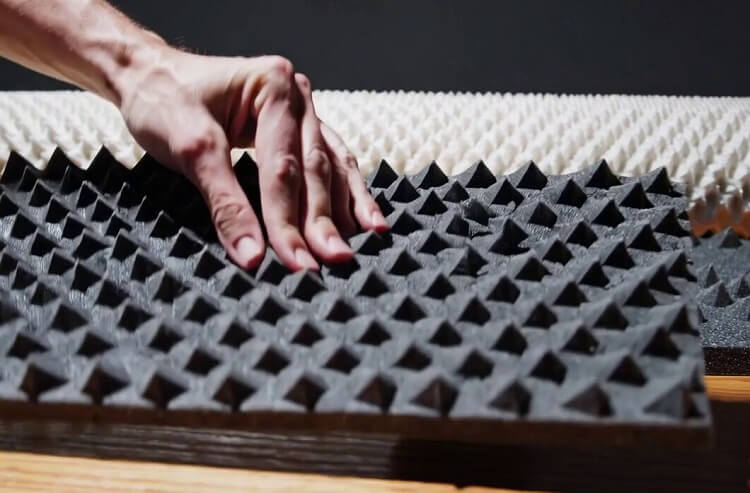
Soundproofing involves both absorbing and blocking noise, two distinct yet complementary approaches to noise control. Does soundproofing absorb or block noise? This article clarifies how soundproofing works, exploring the dual roles of absorption and blocking, and explaining when each method is most effective.
By understanding these principles, you can make informed choices to create quieter, more efficient spaces, whether at home, in the office, or on the road.
The Dual Functions of Soundproofing
Absorbing Noise
Sound absorption focuses on improving acoustic quality within a space by minimizing sound wave reflections. It addresses the “liveness” of a room by reducing reverberation and echo.
How It Works
Absorptive materials, like acoustic foam or panels, primarily function by dissipating sound energy through friction. When sound waves enter the porous structure of these materials, the air molecules within the pores are forced to vibrate.
This vibration generates friction, converting some of the sound energy into a negligible amount of heat. The reduced sound energy then reflects back at a lower intensity, lessening the echo and reverberation within the room. This leads to clearer sound and improved speech intelligibility.
Applications
- Home Theaters: Acoustic panels absorb excess sound to enhance audio clarity and prevent sound reflections from muddying the listening experience.
- Recording Studios: Absorption ensures clean sound recordings by minimizing unwanted room reflections and background noise.
- Open Spaces: Strategically placed absorptive elements reduce background noise and reverberation in open-plan offices or halls, improving speech privacy and reducing overall noise levels.
Blocking Noise
Sound blocking prevents noise from passing through walls, doors, or windows.
It’s a barrier-based approach that aims to stop sound transmission from one space to another.
How It Works
Dense and heavy materials, such as Mass Loaded Vinyl (MLV), effectively block sound by reflecting sound waves. The mass of the material resists the vibration caused by the sound waves, preventing them from passing through. Sealing gaps and adding mass creates an impermeable shield, further reducing noise transmission.
Multiple layers of different materials can enhance blocking effectiveness.
Applications
- Apartments: Sound blocking prevents neighbor noise from intruding, creating a more peaceful living environment.
- Offices: Ensures privacy during meetings and minimizes distractions from surrounding work areas.
- Bedrooms: Blocks outdoor sounds like traffic or airplane noise for better sleep quality.
Materials Used in Soundproofing
Absorptive Materials
- Acoustic Foam Panels: Open-celled foam effectively captures high-frequency sound waves, reducing echoes and reverberation. Different shapes and thicknesses offer varying levels of absorption.
- Fiberglass Insulation: Primarily used within walls, fiberglass insulation absorbs sound by trapping air within its fibers, dampening noise transmission and reducing reverberation.
- Carpets and Rugs: Soft floor coverings naturally absorb sound waves in living spaces, reducing footfall noise and minimizing echo.
Blocking Materials
- Mass Loaded Vinyl (MLV): A dense, flexible material effective at blocking sound transmission when applied to walls, ceilings, and floors. Its high mass inhibits sound wave penetration.
- Double-Glazed Windows: Creates a noise barrier by adding an insulating air gap between two panes of glass.
This air gap helps to decouple the panes, reducing sound transmission.
- Resilient Channels: These metal strips are used to decouple drywall from wall studs. This decoupling minimizes vibration transfer, reducing sound transmission through the structure.
How to Decide Between Absorption and Blocking
Your Goals
- Improve Room Acoustics: Focus on absorption to minimize echoes and reverberation for improved sound quality within the space.
- Prevent Noise Leakage: Opt for sound blocking to create barriers against external sound intrusion or to prevent sound from escaping a room.
Budget and Space Constraints
- Absorptive solutions like foam panels or carpets are often more cost-effective and easier to implement, particularly for DIY projects.
- Blocking solutions, especially those involving structural modifications, can require professional installation and more substantial resources.
Common Scenarios
- Home Theater: Use a combination of both methods—blocking to prevent noise escape to adjacent rooms and absorption to optimize the listening experience within the theater.
- Office Space: Combine fabric-wrapped panels (absorption) for reducing reverberation within the space with soundproof walls or partitions (blocking) for creating private offices or meeting rooms.
- Vehicles: Use vibration-dampening mats for absorption to address interior noise and MLV for blocking road noise from entering the cabin.
FAQ
Can soundproofing absorb and block noise simultaneously?
Yes, some materials, like fiberglass insulation, offer both absorption and blocking properties. However, they typically excel in one area more than the other.
Which is more effective for noisy neighbors?
Blocking is more effective for preventing external noise from entering your space, while absorption improves the sound quality within your space by reducing reflections.
Do I need professional installation for soundproofing?
While DIY options are available for basic absorption treatments and sealing gaps, more complex blocking solutions, especially those involving structural changes, often benefit from professional expertise to ensure maximum effectiveness.
Is soundproofing suitable for small spaces?
Yes, both methods can be effective in small spaces. Absorptive panels or rugs can improve acoustics, and compact barriers can strategically block noise in targeted areas.
Conclusion
Soundproofing encompasses two key functions: absorbing sound to improve room acoustics and blocking sound to prevent transmission. By carefully assessing your goals, budget, and the nature of the noise you’re addressing, you can select the appropriate materials and methods for optimal noise control.
Whether you’re aiming to reduce echoes in a home theater, create a more productive office environment, or enjoy a peaceful night’s sleep, understanding the principles of sound absorption and blocking empowers you to make informed decisions.
For complex soundproofing challenges, consulting with a professional acoustician is recommended to ensure the most effective solution.






